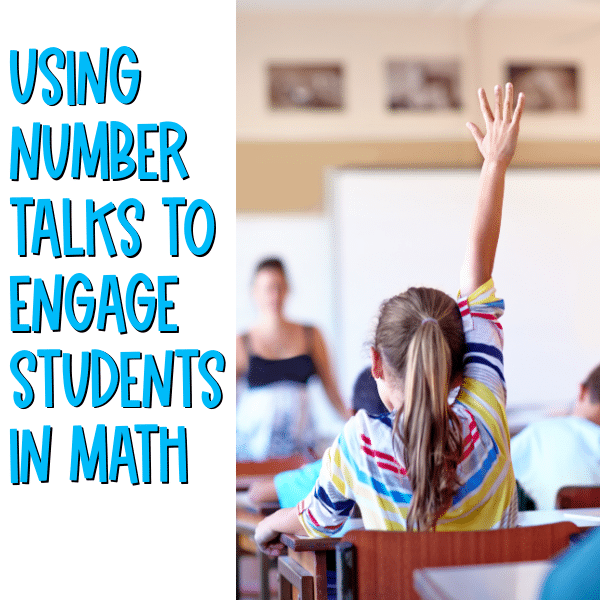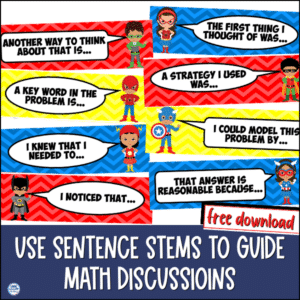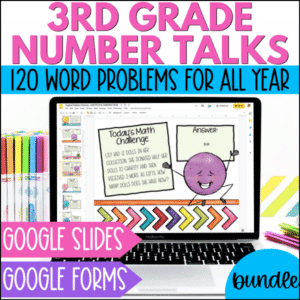One of the best ways to get students truly engaged in math is through number talks. Whether you call them Math Talks, Number Talks, or Problems of the Day, these are essential tools for encouraging mathematical thinking, communication, and problem-solving in the classroom.
Number talks aren’t just about getting the right answer. They’re about helping students articulate their thought process, defend and justify their answers, and learn how to explain their reasoning—all in a supportive, open environment. Let’s explore what number talks are, why they’re so beneficial, and how to lead effective number talks in your upper elementary classroom.
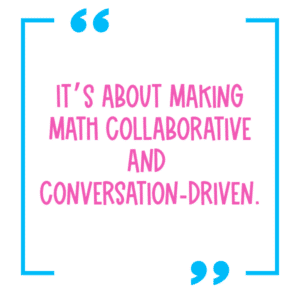
What Are Number Talks?
In short, number talks are short, daily exercises designed to promote mental math and mathematical discussion. A teacher presents a math problem to the class, and students solve it using the strategies of their choice. Then, students share their solutions and discuss the different strategies they used to arrive at their answers.
The goal of number talks is to give students the opportunity to think deeply about numbers, number relationships, and mathematical operations while learning from each other’s strategies. It’s about making math collaborative and conversation-driven.

Benefits of Using Number Talks
There are so many reasons to incorporate number talks into your math routine. Here are just a few:
- Encourages Mathematical Communication: Number talks provide a space where students can explain their reasoning out loud. This helps students develop the language and confidence to talk about math, a critical skill (and part of the the standards teachers are supposed to teach.
- Builds Flexible Thinking: When students hear different approaches to solving the same problem, it helps them see that math isn’t just about one right way to do something. They start to understand that there are multiple ways to approach a problem.
- Fosters a Growth Mindset: Number talks encourage students to take risks, make mistakes, and learn from them. In fact, students often learn more from mistakes than from correct answers. It builds resilience and a growth mindset toward math.
How to Lead Effective Number Talks
Leading Number Talks takes a bit of practice, but with the right approach, they can become one of the most engaging parts of your math lessons. Here are some tips to help you get started:
- Establish a Safe Environment
From day one, it’s important to create a safe and supportive environment where all students feel comfortable sharing their ideas—even if they’re unsure or make mistakes. Let students know that mistakes are part of the learning process, and model this mindset in your own responses.
Use phrases like:- “Interesting! Can you explain your thinking a little more?”
- “That’s one way to think about it. Let’s compare that strategy to another approach.”
- Encourage Multiple Strategies
When presenting a problem, encourage students to think about multiple strategies for solving it. Start by asking, “Who got a different answer?” or “Who used a different strategy?” This opens up the floor for students to explore a variety of mathematical thinking.
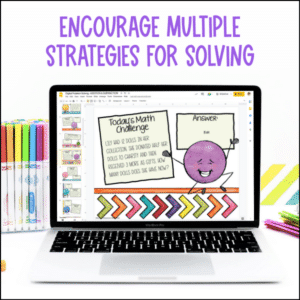
- Use Sentence Stems to Guide Discussion
Some students may feel unsure about how to express their thinking, so providing sentence stems can be really helpful. You can download a free set of discussion stems here. Or Consider posting a few of these on the board:- “I noticed that…”
- “I thought about it like this…”
- “I agree/disagree with ____ because…”
- Let Students Lead the Discussion
Try to take a step back and let the students drive the conversation. Your role as the teacher is to facilitate, not to guide them to the ‘right’ answer. Allow the students to wrestle with the math, talk through misconceptions, and come to conclusions as a group.
When students come to consensus or a breakthrough moment, you can document these ideas for the class to see, like a collective math discovery!

- Incorporate Virtual Number Talks
If you’re teaching in a virtual or hybrid environment, Number Talks can still work beautifully. Display a problem on the screen, and have students submit their answers using a digital tool. Once all the answers are collected, open up the discussion for students to share their thinking and debate solutions. It’s a great way to keep students engaged online!
Bonus Idea: Use Google Slides to assign individual problems for students to solve independently. This allows them to work through the math at their own pace while still being part of a broader Number Talk discussion.
Extra Fun: Morning Math Talks
Want to make math part of your morning routine? Try displaying a number talk problem on your whiteboard as students come in. It’s a fantastic way to get their brains warmed up and thinking critically before the day even starts!
By incorporating number talks into your math instruction, you’ll be giving your students opportunities to develop deep mathematical thinking, communication skills, and a growth mindset. It’s an engaging, collaborative way to get students excited about math—and to help them discover that mistakes are just stepping stones on the path to learning.
Now, who’s ready for some Number Talks? You can grab a whole year’s worth of number talks for 3rd graders right here!

